Today’s hospitality industry depends on efficiency and fiscal responsibility. If you’re noticing that your profit margins are slipping, then it might be time to start cutting some costs.
Does that mean you should compromise on food quality or slash employee wages? Of course not.
There are dozens of steps you can take before it ever comes to that.
This article will arm you with ten ideas for cutting costs that will not only help you regain control of your finances, but also enable you to raise the quality of your service.
Let’s start with some proper inventory management.
Keep a Close Eye on Your Inventory
Inefficient inventory management can put a huge strain on your restaurant’s finances.
That’s because inventory can spoil very quickly, and every ingredient that ends up unused and discarded means money down the drain.
One good practice that could help you here is to take daily inventory so that you can monitor which ingredients are used, how often, and in which quantities.
Technology can help you here.
These days, restaurants use cloud-powered inventory management tools that help them easily update their inventory and have a detailed insight into what’s available, and how fast the ingredients are running out.
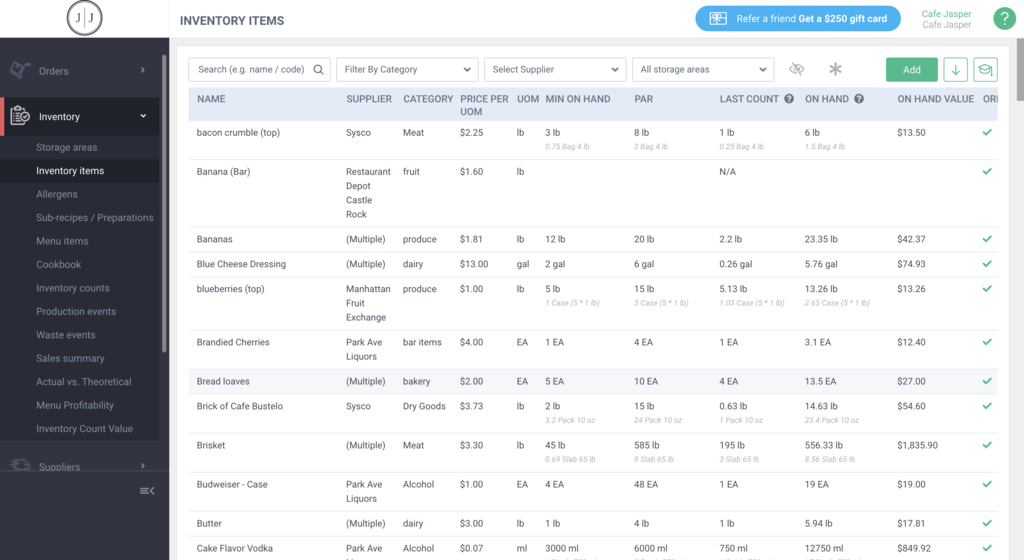
Source: MarketMan
With inventory management tools such as MarketMan, you’ll be better informed on when to skip ordering new inventory to prevent food from spoiling.
You’ll also be able to quickly find out if some ingredients are overused in dishes so you can intervene and propose better portion control.
A restaurant's inventory is more sensitive than the inventory of almost any other kind of business. Keep a close eye on it, and you’ll be able to prevent wasting money.
Use the First In, First Out Method
The first in, first out (FIFO) method is another idea for cost-cutting that focuses on how you handle your inventory.
This is an extremely simple, yet effective way to reduce food waste and thus cut business costs.
The FIFO method essentially means that the items that have arrived at your pantry first should also be used up first.
In other words, older ingredients need to be consumed before the new ones so they don’t spoil.
In practice, the method is applied by stocking recently bought items in the back of your shelves so that they don’t accidentally get opened until the older items have been depleted.
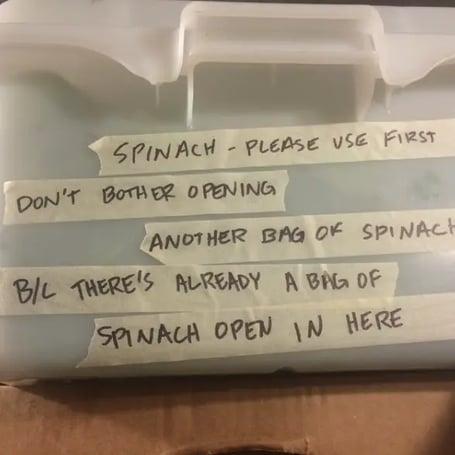
Source: Buzzfeed
Also, try to organize your inventory so that every item is always visible.
That way, you’re reducing the possibility of an ingredient being forgotten or unaccounted for because it couldn’t be found.
Some suggestions here include putting smaller items in front of the larger ones or adding levels to your shelves so that every type of item can easily be found, like in this next example:
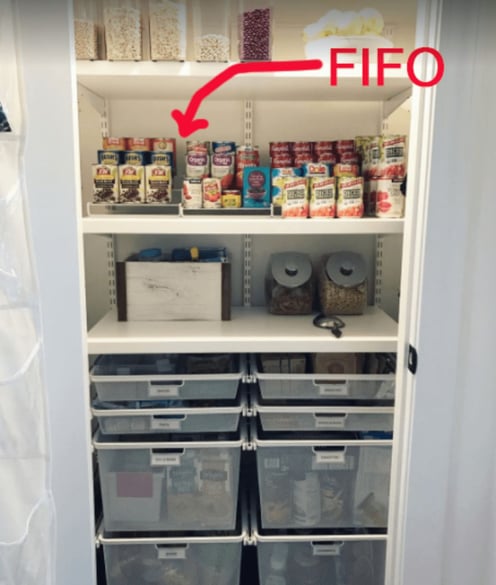
Source: Style Degree
The FIFO method is an old-school inventory management trick, but it holds up even today. Use it to your advantage to cut costs with very little effort and zero investment on your part.
Get Creative With Older Ingredients
In many cases, just because an ingredient is a little older, it doesn’t mean that it’s past its expiration date or that it should immediately be thrown away.
And this isn’t just about cutting costs. In today’s world, wasting food can be incredibly harmful to the environment, not just your budget.
So, collaborate with your kitchen staff on some ideas to upcycle food. These might include:
- Making croutons from stale bread
- Using produce leftovers and trimmings to make vegetable stock
- Blanching withered vegetables and adding them to sauces for pasta dishes.
- Using day-old rice for fried rice recipes.
This also goes for items that arrived at your restaurant damaged or in poor condition. Are there any procedures you can think of to make them usable?
For example, you can use your kitchen dehydrator to dry bruised or “ugly” fruit and then add it to dessert recipes, or even sell the dehydrated fruit as a separate item.
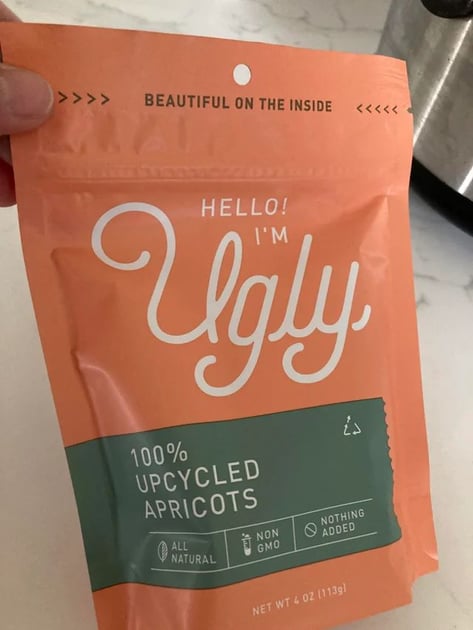
Source: Reddit
Think twice before throwing out ingredients that aren’t expired yet. Some creative upcycling will help you cut costs while also making your kitchen more environmentally friendly.
Calculate the Cost of Each Menu Item
To cut costs, it might be a good idea to take a look at your menu and rethink some high-cost, low-profit dishes.
The first thing to do here is to calculate the cost of each menu item by breaking down and pricing every ingredient that goes into it.
Here’s an example of how that’s done for a chili cheeseburger.
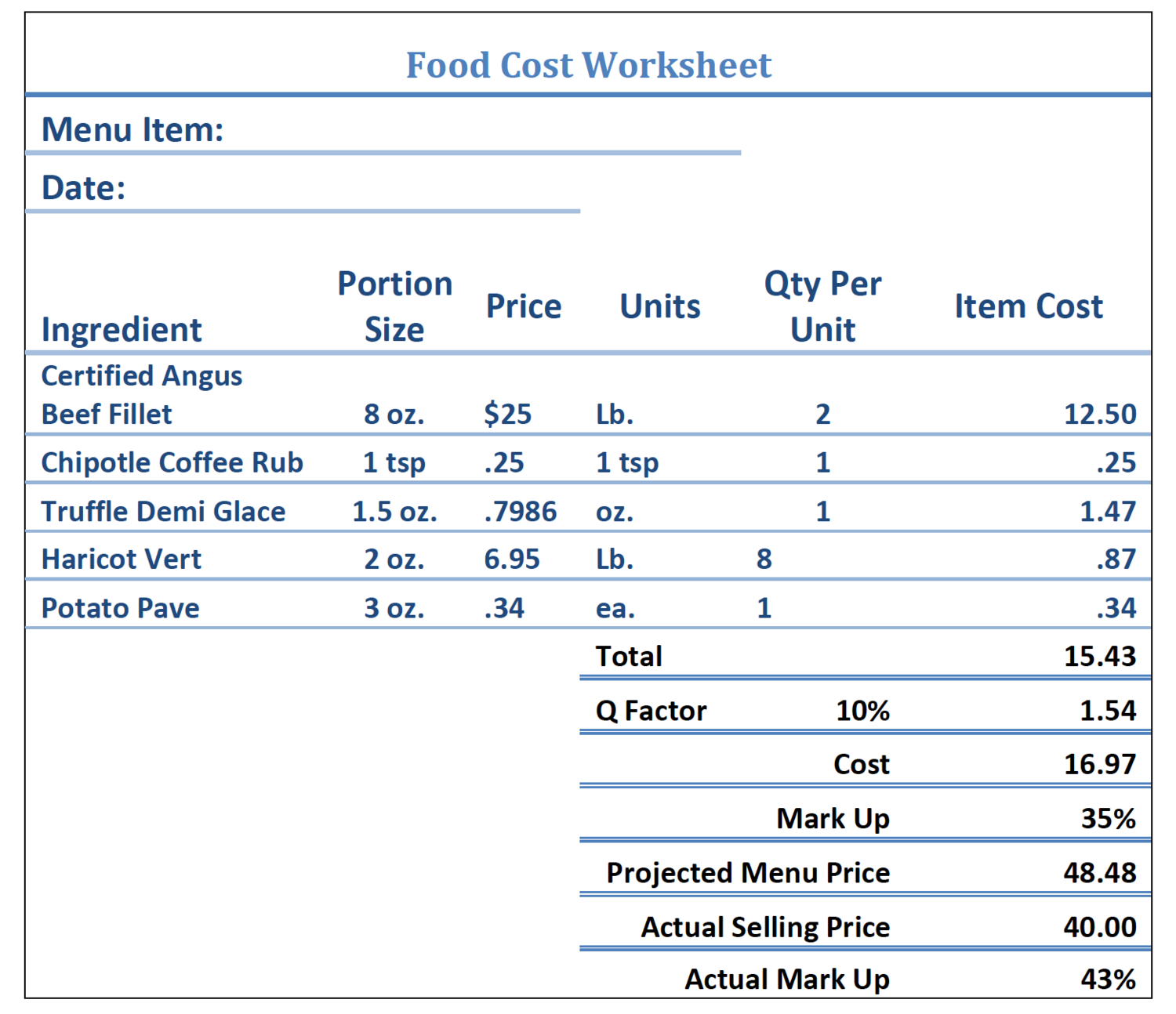
Source: Culinary Pro
Next, you’ll want to compare this cost to the price this item has on your menu.
In a profitable restaurant, the cost of a menu item will be somewhere between 30-35% of the final price.
That’s called your ideal food cost percentage, and it depends on your restaurant's operating costs (e.g., utilities, staff, rent, and so on).
If the cost of the menu item is higher than your ideal food cost percentage, then the price you’ve set for it on your menu is too low.
You can go on to decide if you want to get rid of the meal or increase its price.
You should repeat this process every so often, especially in periods of inflation, to make sure rising prices don’t eat into your profits and to keep the cost of preparing food manageable.
Remove Unpopular Items From Your Menu
After you’ve calculated the profitability of your menu items, you can go through your records and take a look at how often each of them is ordered to find unpopular items that guests don’t find enticing.
Then, you can run these items through the food engineering matrix.
Here it is, in a nutshell.
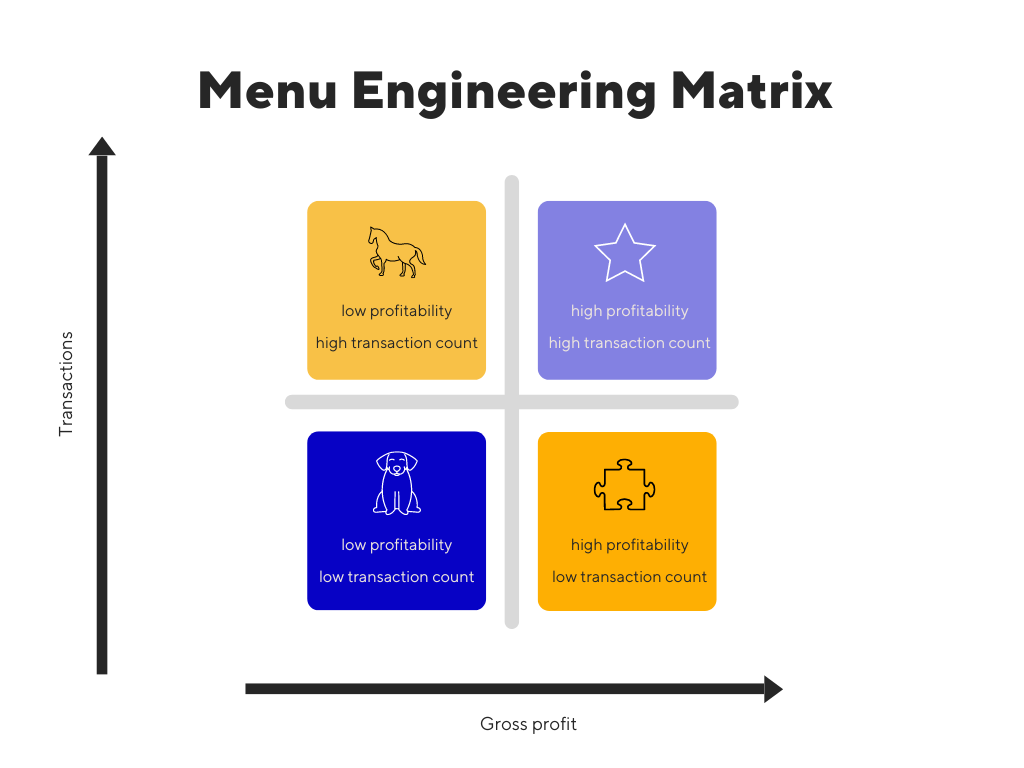
Source: Tablein
Comparing profitability and popularity will give you a good idea of which dishes can stay, and which ones should be reconsidered.
For example, if a menu item helps you turn a high profit and is frequently ordered by guests a star on your menu), then that’s an item you should definitely keep.
However, if a dish costs you a lot to produce and your guests largely ignore it, then you may consider removing it from the menu to avoid wasting expensive ingredients.
Scaling down your menu by eliminating unpopular dishes is always a good idea.
It’s a way to cut costs, and it also enables you to use up your stock before it gets a chance to age even a little bit.
Control the Size of Your Portions
Being precise with your ingredients doesn’t seem like it can make a big difference when you’re trying to cut costs, but it adds up when you serve hundreds of plates a day.
That means even the smallest excess can add up to a considerable cost. So let’s go over some tips for good portion control practices.
First and foremost, make sure all of your recipes are standardized. That means providing the instructions, approved ingredient quantities, and total yields for every dish you serve.
Here’s an example of a standardized recipe for humba. You can use it as a template for your own recipes.
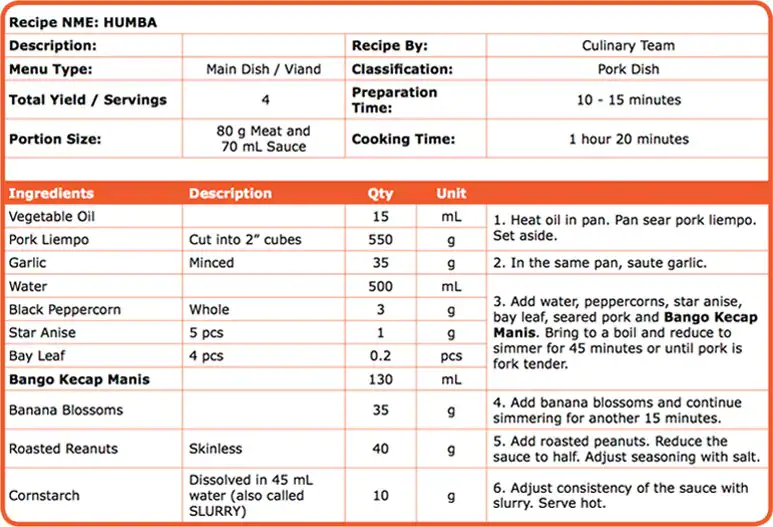
Source: Unilever Food Solutions
Of course, to be able to control the portion sizes, your kitchen staff should have precise instruments for measuring.
These include a quality kitchen scale, measuring spoons, cups, and jugs.
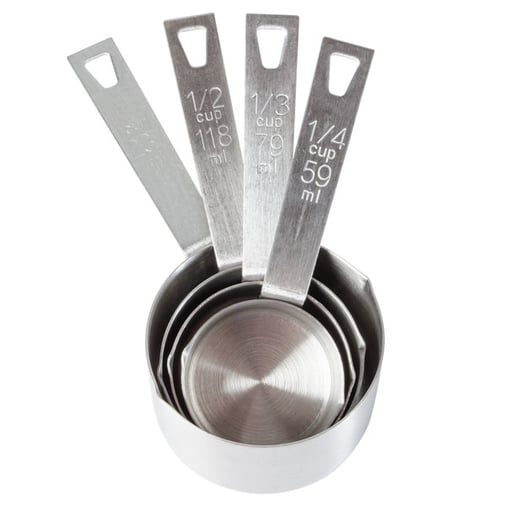
Source: Webstaurant Store
Last but not least, you should also standardize your plating.
Once the chef decides how the dish will be served, your kitchen staff should learn how to repeat the process every time, using the same amount of ingredients and decorations.
When done right, portion control isn’t about making dishes smaller.
Rather, it’s about standardizing your portion workflow to guarantee that the ingredients aren’t wasted, and that the resources remain under your control.
Avoid Giving Out Too Many Freebies
Giving out freebies at your restaurant is great marketing.
It can help you win over customers and create a buzz around your eatery once influencers and food critics catch wind of the great food you serve.
However, if you’re not careful, the costs can easily outweigh the benefits here.
Therefore, while we’re not recommending cutting out freebies completely, we suggest that you try to be a little more selective with your complimentary items.
For example, instead of treating just any guest with a glass of wine or free dessert, reserve those treats for your most loyal customers or for those guests celebrating a special occasion, such as their anniversary or birthday.
It might also be a good idea to do some research on the influencers and critics that contact you with offers for reviews and agree only to work with the top ones.
When it comes to critics, you can find out what outlets they write for and how popular they are, and for influencers, you can easily check how big their followings are and what kinds of posts they make.

Source: DEVOURPOWER on Instagram
Freebies are an essential part of restaurant marketing and promotion. However, they don’t come free for your business, so exercise some restraint when giving them out.
Use an Online Table Booking System
Reservation management is very time-consuming and incurs higher costs if done inefficiently.
You either need to pay extra staff to handle reservations, or your existing staff gets so busy taking calls and making table arrangements that they can’t focus on providing a great dining experience.
Automating the process with an online reservation system, such as Tablein, solves this problem.
This handy tool enables guests to book a table online (from your webpage, Google, or social media) without the involvement of your staff.
All they have to do is put in the date, time, and the number of people in their party, and click “reserve.”
They can even put in special requests, or dietary restrictions, as well as their preferred seating area.
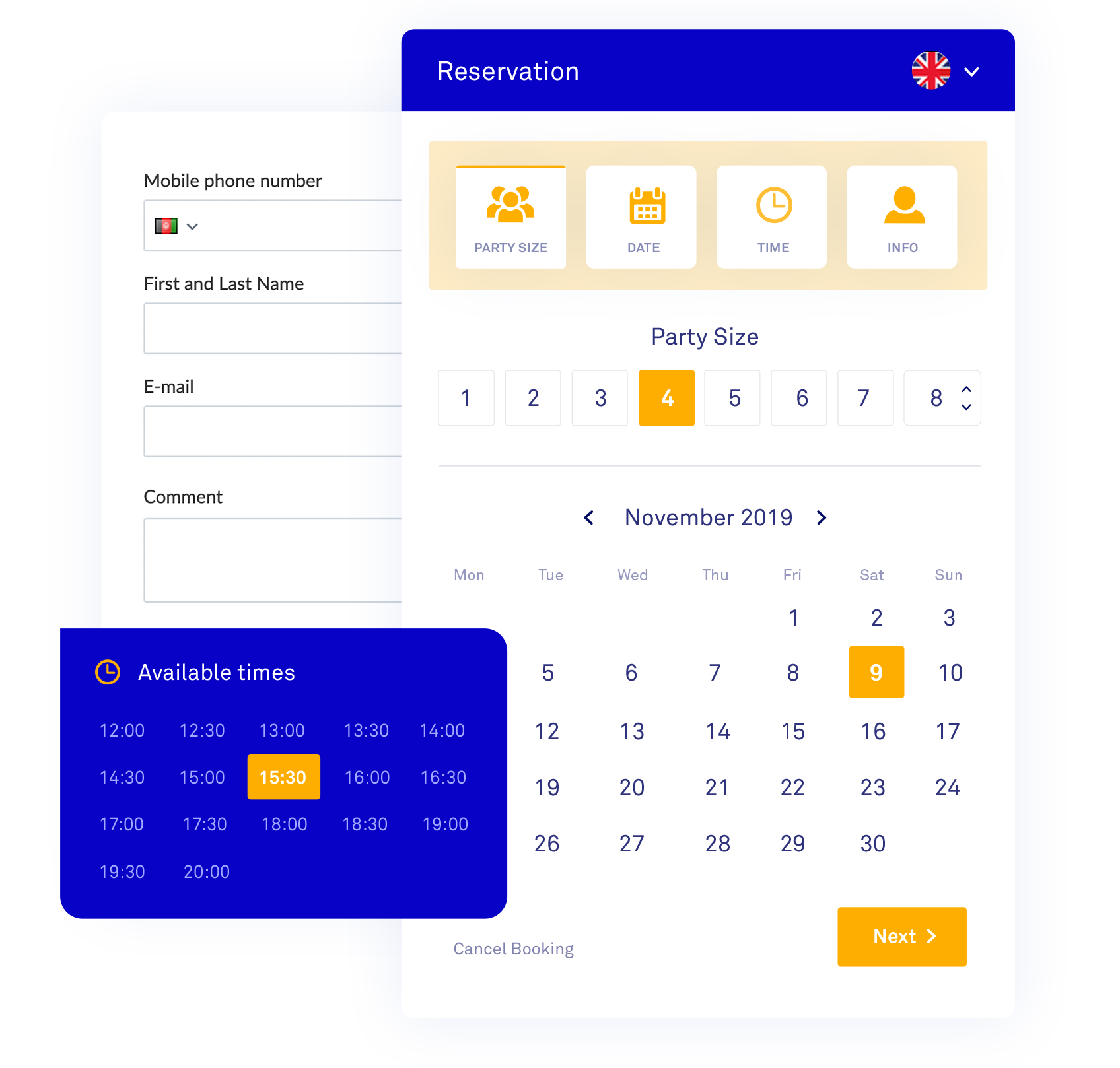
Source: Tablein
With an automated reservation system, your staff can then focus on guests who are already in your dining hall and don’t need to waste any time managing bookings, meaning you’re saving money on labor costs and ensuring optimal service, all at the same time.
Review Your Restaurant Staff Schedules
On the subject of staff, there’s one more thing you can do to cut costs at your restaurant, and that’s effective scheduling.
Being understaffed during peak hours can seriously endanger the quality of your service, but the threat to your finances comes from the opposite situation: when you’re overstaffed during slow times.
Idle staff still needs to be paid, which means you’re incurring costs without adding anything of value to your level of service.
Plus, without any guests to serve, your staff could miss out on tips, so this situation isn’t ideal for them either.
So, how can you ensure you always have just enough workers on the clock?
This is actually another issue that can easily be fixed using an online reservation system.
Tablein, for example, has integrated analytics that tracks the flow of reservations at your restaurant.
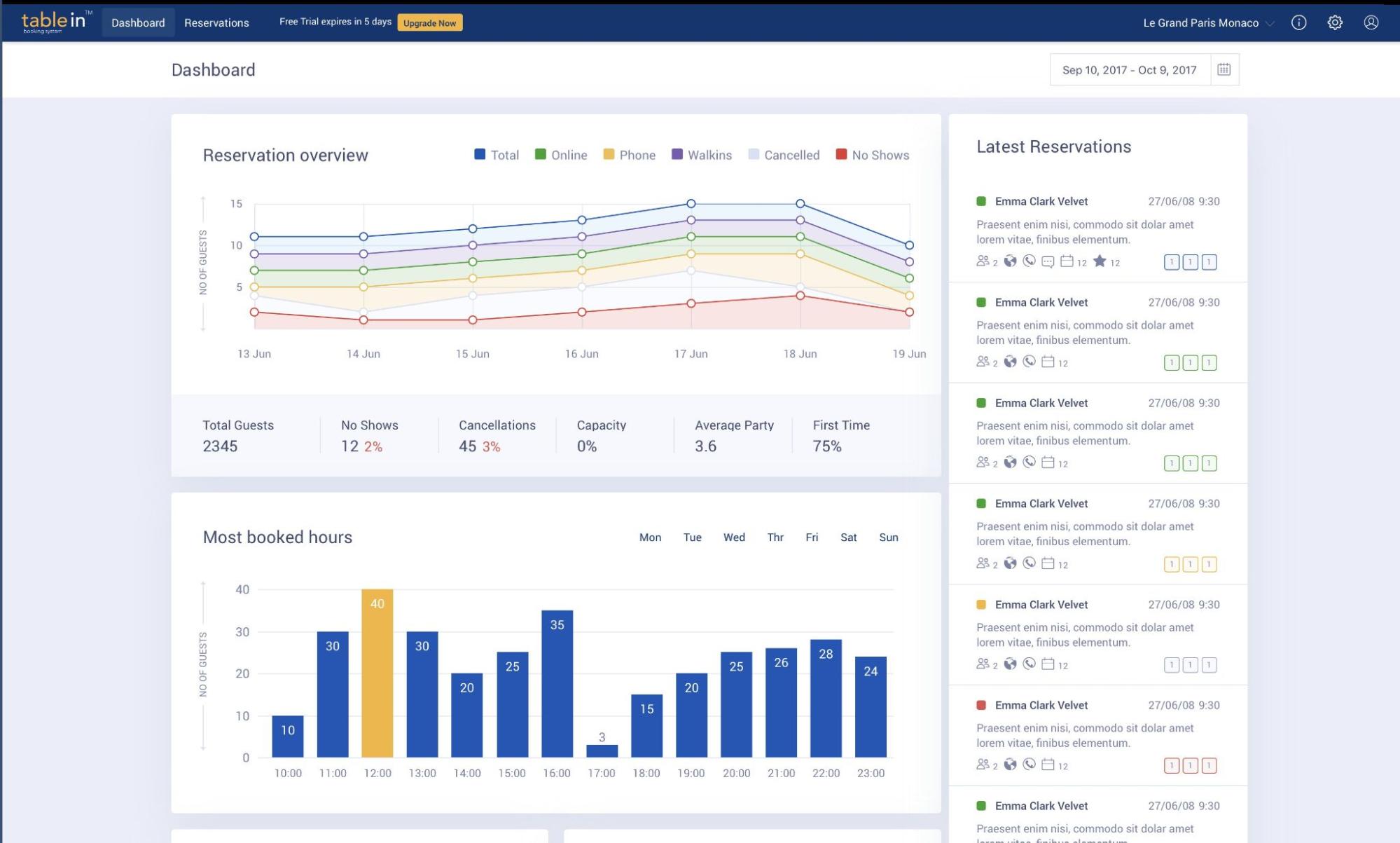
Source: Tablein
With the details of every reservation recorded, you’ll get valuable insights into when your busiest times are, meaning you’ll be able to accurately predict your staffing needs for every given day.
And that will help you work out the best possible schedules and cut costs because your staff will always be working at maximum efficiency.
Be More Efficient to Save on Utilities
Our last cost-cutting tip has a dual effect. It will enable you to save money while also protecting the environment. We are, of course, talking about energy efficiency.
Restaurants are big energy consumers, but you can still take steps to reduce energy consumption.
Here are some ideas:
- Swapping out all of your light bulbs for more efficient LED lighting.
- Ensuring the dishwasher is always full before a washing cycle.
- Shutting the door of your walk-in freezer.
Also, if you’re using neon lights to advertise your business even after hours, it might be time to rethink this practice.
Not only do they use a substantial amount of electricity, but have also become increasingly unpopular in recent times.
For instance, in late 2022, climate activists in Paris took it upon themselves to manually turn off advertising lights in their city at night to fight useless power consumption.

Source: France24
The more efficient you are with your energy consumption, the more you’ll be able to save on your next electric bill.
More importantly, you’ll be running an environmentally conscious business, and there’s simply no way to put a price tag on that.
Conclusion
We hope this article has shown you just how much control you can have over your restaurant’s finances and inspired you to take steps to cut costs in various areas of your business.
The ten ideas we’ve presented here should be enough to prove that cutting costs doesn’t have to come at the expense of the quality of your service or the happiness of your employees.
So take action today and enjoy more stable finances and more efficient restaurant operations tomorrow.
Get a 30-day Exclusive Trial
As a Tablein blog reader, you’re eligible for an exclusive 30-day free trial to experience our simple reservation solution for your restaurant.
Enter your business email, and we’ll send you all the steps needed to create your account.
Share this
You may also like

5 Common Restaurant Complaints and How to Handle Them
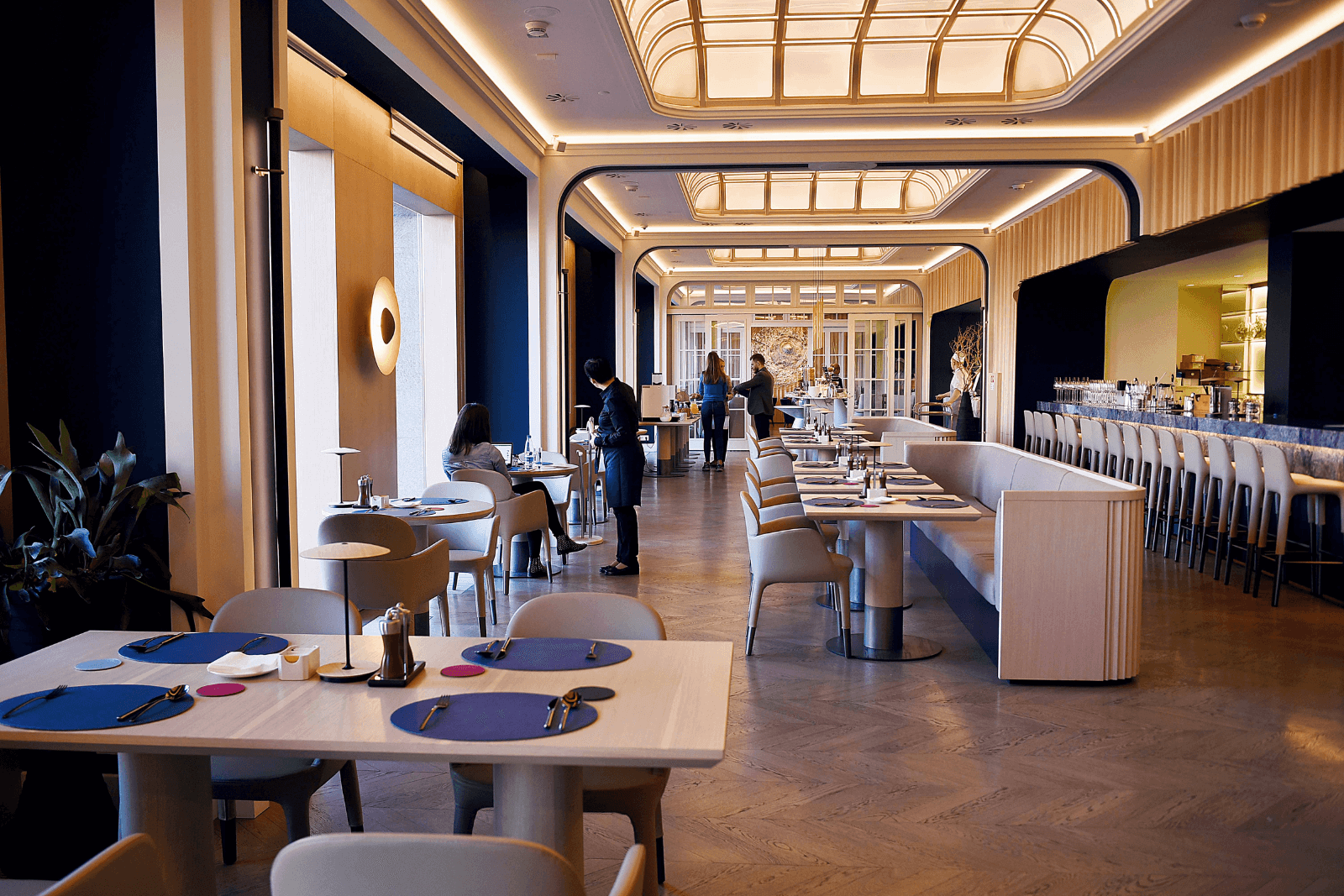
The Ultimate Guide to Restaurant Cancellation Fees
